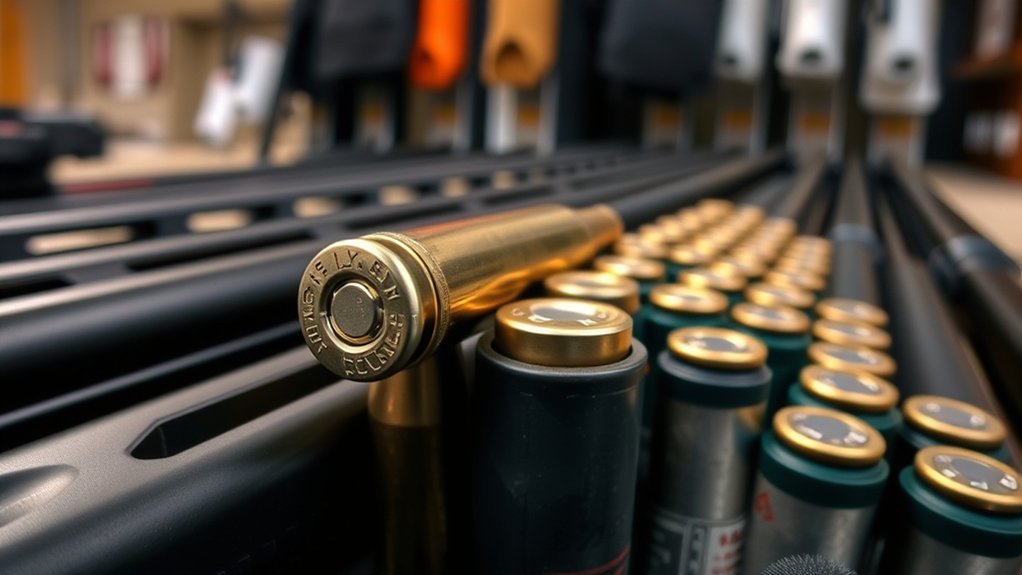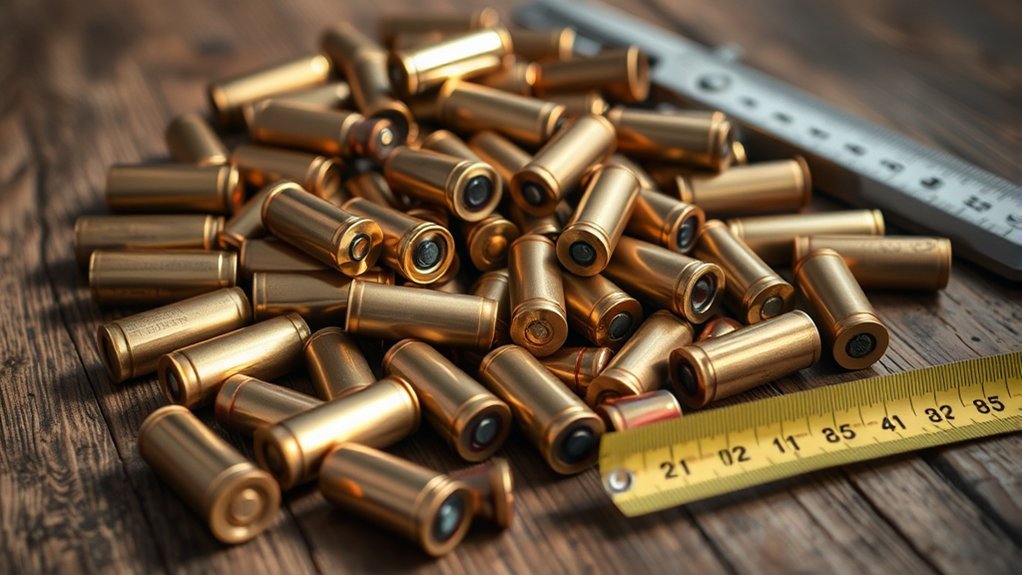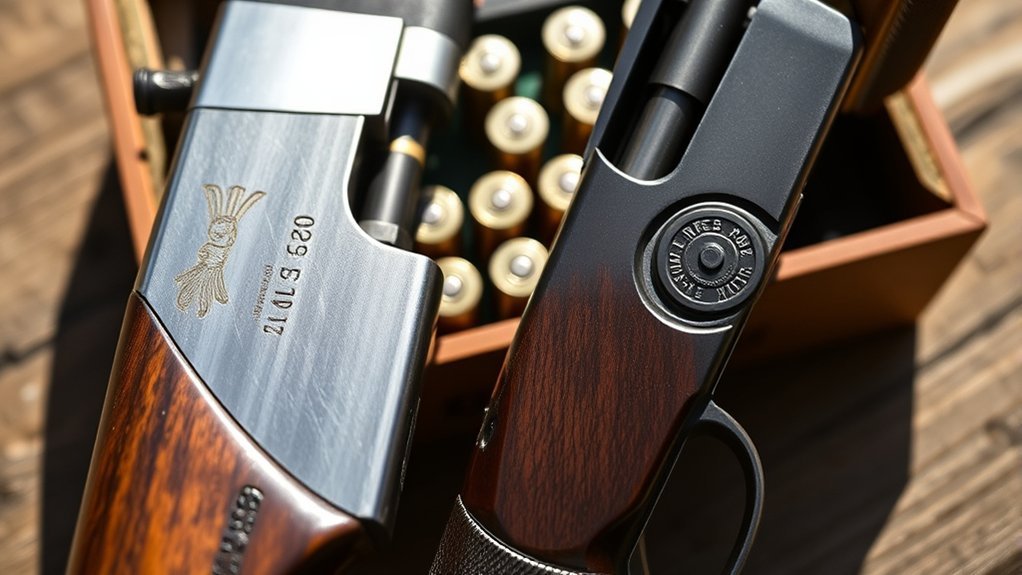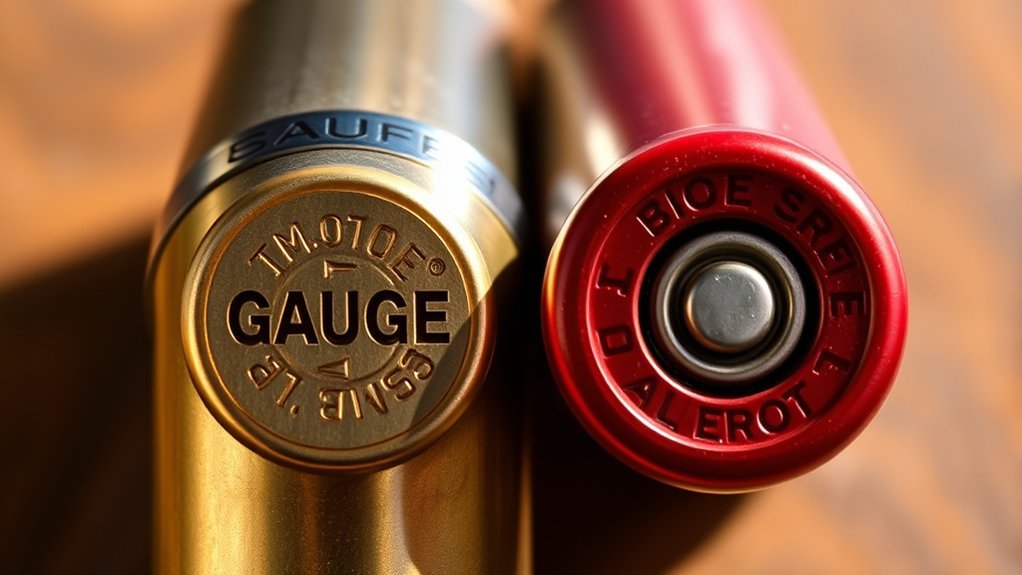When it comes to firearms, understanding the difference between caliber and gauge is essential for making informed decisions. Caliber measures the diameter of a bullet, while gauge pertains to shotgun bore sizes. Each measurement influences performance and suitability for various shooting scenarios. As you explore these distinctions, consider how they impact your choices in firearms and ammunition. What factors should you weigh when selecting the right option for your specific needs?
Understanding Caliber

When you explore the world of firearms, understanding caliber is fundamental, as it directly impacts performance and suitability for various applications. Caliber refers to the diameter of the bullet or the bore of the firearm, typically measured in inches or millimeters. For instance, a .45 caliber bullet measures .45 inches in diameter, while a 9mm bullet measures 9 millimeters. Different calibers produce varied ballistic characteristics, influencing factors such as muzzle velocity, energy, and recoil. Selecting the right caliber is vital for achieving specific goals, whether for self-defense, hunting, or target shooting. Always consider the firearm’s design and intended use to guarantee peak performance and safety. Understanding these distinctions helps you make informed decisions in your shooting endeavors.
Understanding Gauge

Understanding gauge is just as important as grasping the concept of caliber, especially when it comes to shotguns. Gauge refers to the size of the shotgun bore and is measured by the number of lead balls of a particular diameter that equal one pound. Here are some key aspects to evaluate:
Understanding gauge is crucial for shotguns, as it determines bore size and influences ammunition selection.
- The lower the gauge number, the larger the bore diameter.
- Common gauges include 12, 20, and 410.
- A 12-gauge shotgun has a larger bore than a 20-gauge.
- Gauge influences shot pattern and recoil, impacting shooting experience.
- It’s essential for selecting appropriate ammunition for specific hunting or shooting applications.
Understanding gauge helps you make informed decisions when choosing a shotgun that meets your needs.
How Caliber Is Measured

Caliber is typically measured in either inches or millimeters, which indicates the diameter of the bullet or the internal diameter of the firearm’s barrel. This measurement helps you select appropriate ammunition for your firearm.
Here’s a quick reference table for common caliber measurements:
| Caliber (Inches) | Caliber (Millimeters) | Common Use |
|---|---|---|
| .22 | 5.56 | Target shooting |
| .45 | 11.43 | Handgun |
| .308 | 7.62 | Hunting/Long-range |
| .357 | 9.07 | Revolver |
Understanding these measurements allows you to make informed choices about your firearms and their compatibility with ammunition. Always guarantee that you’re using the correct caliber for safety and performance.
How Gauge Is Measured
When measuring gauge, you’ll notice it differs greatly from caliber, as it’s based on a standardized system related to the number of lead balls that fit within the barrel. Understanding these measurement standards is essential for comparing various gauge sizes accurately. In this section, we’ll explore how gauge is quantified and highlight common sizes you’ll encounter.
Measurement Standards Explained
Although gauge measurements can seem perplexing, they play an essential role in distinguishing the size of shotgun and certain other types of ammunition. Gauge is determined by the number of lead balls of a specific diameter that weigh one pound. The smaller the gauge number, the larger the diameter of the bore. Here’s how it breaks down:
- 12 Gauge: Commonly used for hunting and sport shooting.
- 20 Gauge: Lighter and often preferred by smaller shooters.
- 16 Gauge: A versatile option between 12 and 20.
- 28 Gauge: Typically used for upland game birds.
- .410 Bore: Technically not a gauge but a caliber, used for small game.
Understanding these standards helps you choose the right ammunition for your needs.
Gauge vs. Caliber Comparison
Understanding the difference between gauge and caliber is essential for anyone involved in shooting sports or hunting. Gauge refers to the diameter of a shotgun bore, measured by the number of lead balls of a specific diameter that equal one pound. For example, a 12-gauge shotgun bore can fit 12 lead balls of that diameter weighing one pound each. Conversely, caliber measures the bullet’s diameter in inches or millimeters, primarily for rifles and handguns. For instance, a .45 caliber bullet has a diameter of .45 inches. While gauge is an inverse measurement, where a higher gauge number indicates a smaller bore, caliber is a direct measurement of the bullet size. Understanding these distinctions helps you choose the right firearm and ammunition for your needs.
Common Gauge Sizes
Gauge sizes are standardized measurements that indicate the diameter of a shotgun’s bore. The gauge is determined by the number of lead balls of a specific diameter that weigh a pound. Here are some common gauge sizes you’ll encounter:
- 12 Gauge: Most popular, versatile for various shooting activities.
- 20 Gauge: Lighter recoil, ideal for smaller shooters or bird hunting.
- 28 Gauge: Excellent for upland game; lightweight and manageable.
- 410 Gauge: Considered a small bore; suitable for beginners or small game.
- 10 Gauge: Heavy-duty, used for waterfowl and large game due to its power.
Understanding these common sizes helps you choose the right shotgun for your specific needs and preferences.
Common Calibers and Their Uses
When selecting a firearm, knowing the common calibers and their uses is essential for making informed decisions. The .22 Long Rifle is ideal for target shooting and small game hunting due to its low recoil and affordability. The 9mm Parabellum is popular for self-defense and law enforcement, offering a balance of power and manageable recoil. The .40 S&W, favored by many police forces, provides greater stopping power while still maintaining control. The .45 ACP is known for its stopping power in self-defense scenarios but comes with increased recoil. For hunting larger game, the .308 Winchester is a versatile choice, effective at various distances. Understanding these calibers helps you choose the right firearm for your specific needs.
Common Gauges and Their Uses
When selecting a shotgun or rifle, understanding common gauges and calibers is essential for peak performance. Popular shotgun gauges like 12, 20, and .410 cater to different shooting needs, while common rifle calibers such as .223 and .308 serve specific purposes in hunting and target shooting. Each gauge and caliber has unique characteristics that affect range, accuracy, and stopping power, so choose wisely based on your intended use.
Popular Shotgun Gauges
Understanding the various shotgun gauges is essential for selecting the right firearm for your needs. Each gauge serves different purposes, making it vital to know which one aligns with your shooting activities. Here are some popular shotgun gauges and their common uses:
- 12 Gauge: Versatile and widely used for hunting, sport shooting, and home defense.
- 20 Gauge: Lighter recoil, ideal for smaller-framed shooters and upland bird hunting.
- 28 Gauge: Excellent for small game and skeet shooting, offering precision with less shot.
- .410 Bore: Great for beginners and small game, perfect for teaching proper shooting techniques.
- 10 Gauge: Primarily used for waterfowl hunting, delivering more power and larger shot sizes.
Choose the gauge that fits your intended use for peak performance.
Common Rifle Calibers
While selecting a shotgun gauge is important for various shooting activities, understanding common rifle calibers is equally essential for those pursuing marksmanship or hunting. The .22 Long Rifle is ideal for beginners and small game due to its low recoil and affordability. For deer hunting, the .30-06 Springfield offers versatility and power, making it a top choice among hunters. If you’re considering varmint hunting, the .223 Remington provides excellent accuracy and low recoil. For larger game, the .308 Winchester is known for its effectiveness and range. Finally, the 7mm Remington Magnum excels in long-range shooting with its flat trajectory. Each caliber serves specific purposes, so knowing your needs and preferences will help you make the right choice.
Choosing the Right Caliber or Gauge for Your Needs
Choosing the right caliber or gauge for your needs involves considering several factors, including the intended use, personal comfort, and legal regulations. Here are key aspects to evaluate:
- Purpose: Determine if you’re hunting, target shooting, or self-defense.
- Recoil Sensitivity: Assess your comfort with recoil; higher calibers usually mean more kick.
- Ammunition Availability: Check if the caliber or gauge you prefer has readily available ammunition.
- Legal Restrictions: Be aware of any laws or regulations regarding specific calibers or gauges in your area.
- Budget: Factor in the cost of both the firearm and ammunition, as some calibers can be more expensive.
Conclusion
In conclusion, understanding the differences between caliber and gauge is like choosing the right tool for a job. Just as a carpenter selects the perfect saw for precision cuts, you need to match your firearm to your specific needs. Whether you’re targeting small game with a .22 caliber rifle or heading out for waterfowl with a 12-gauge shotgun, knowing these measurements guarantees you get the best performance. Choose wisely, and you’ll hit your mark every time.

